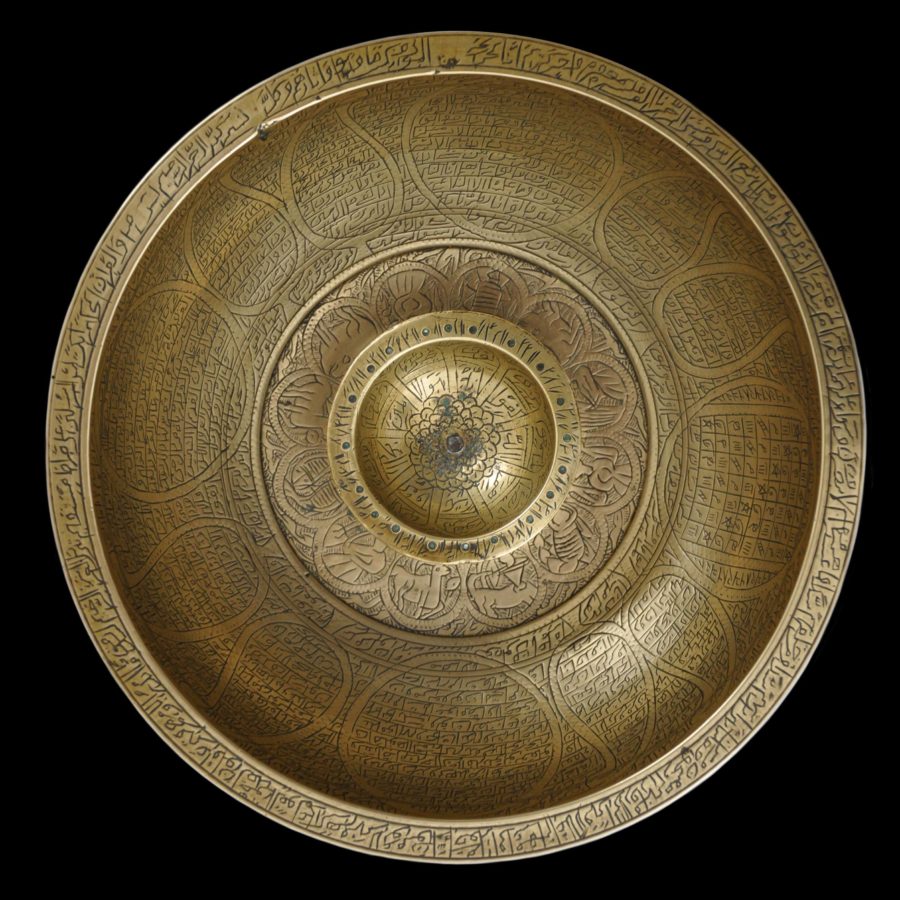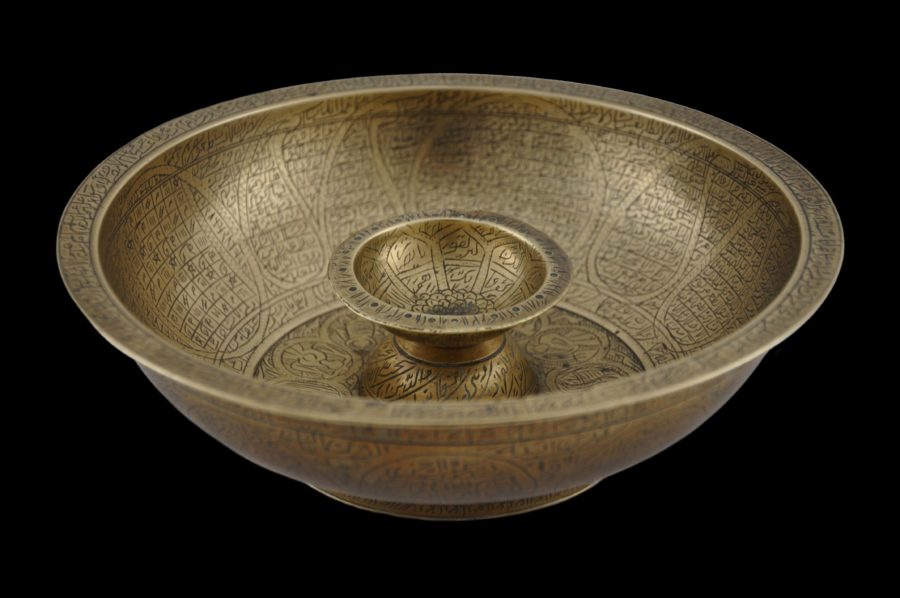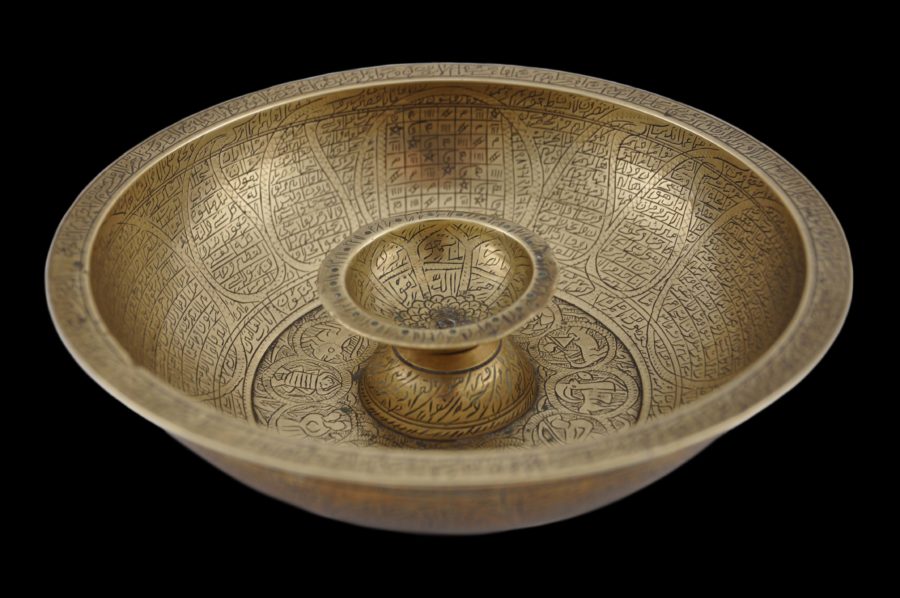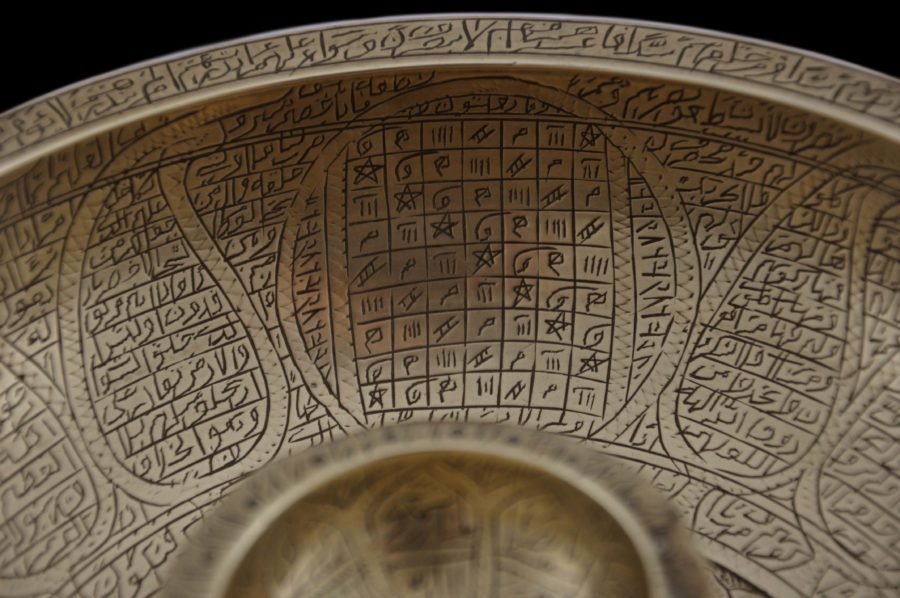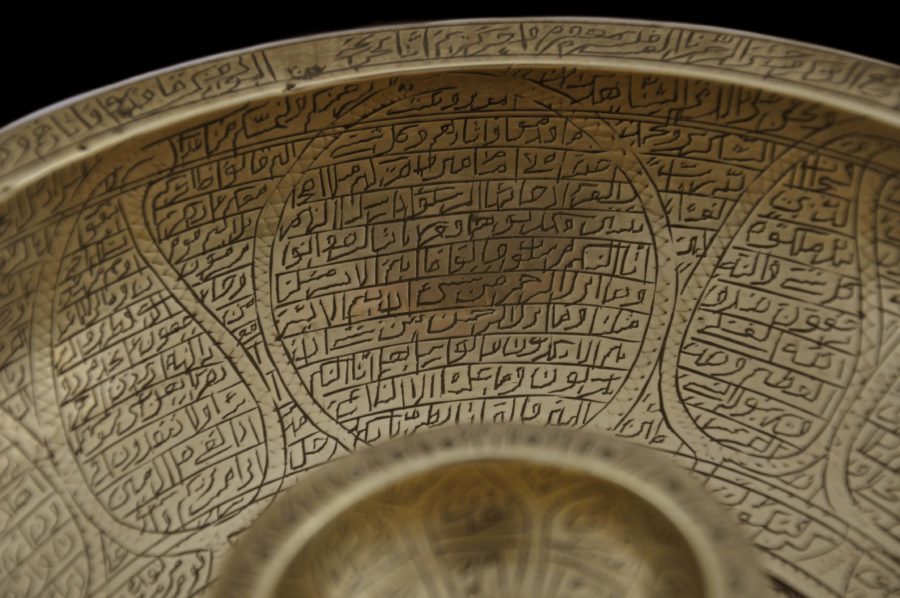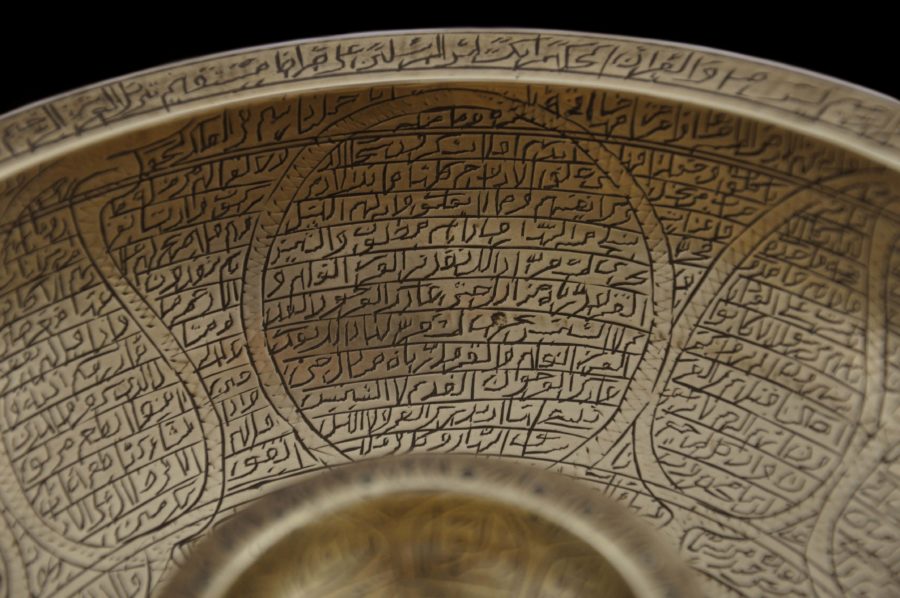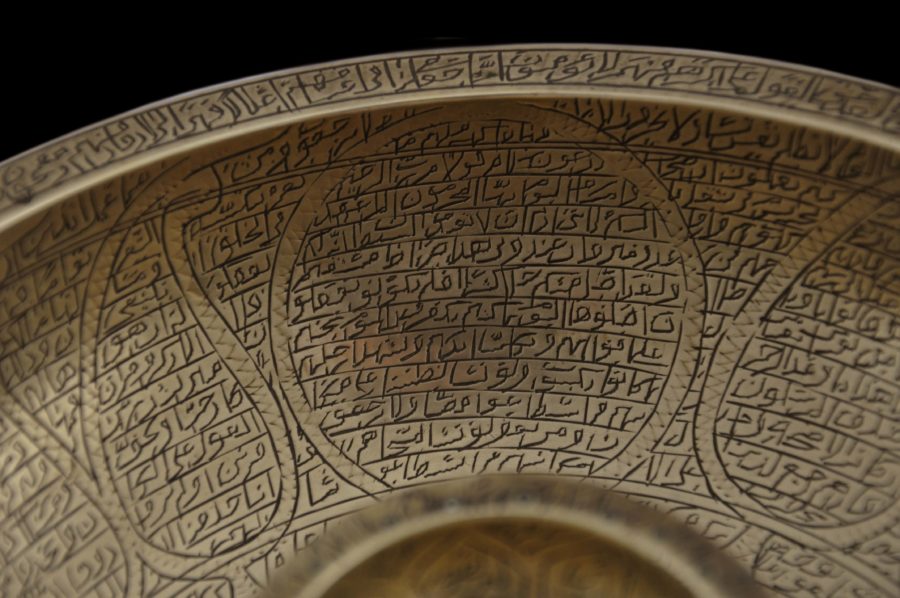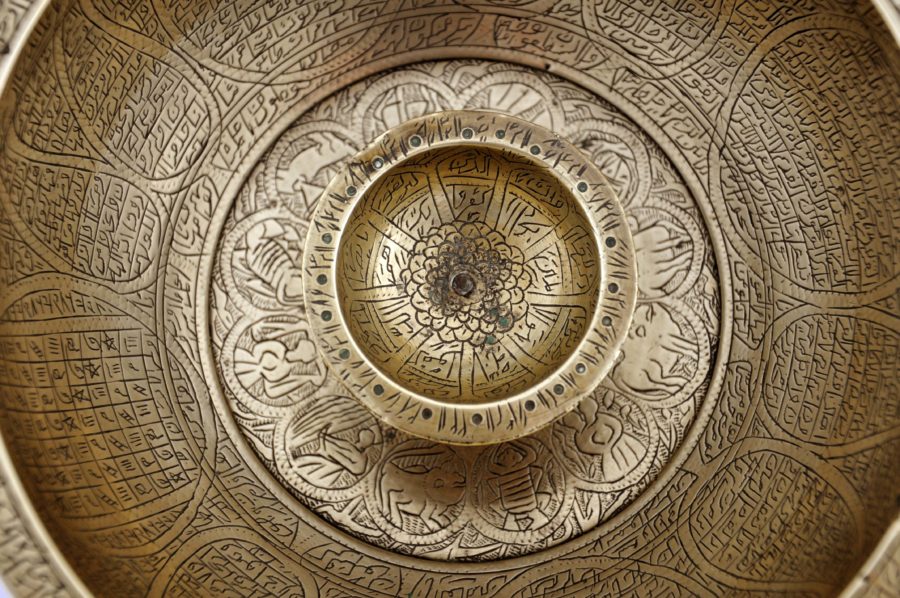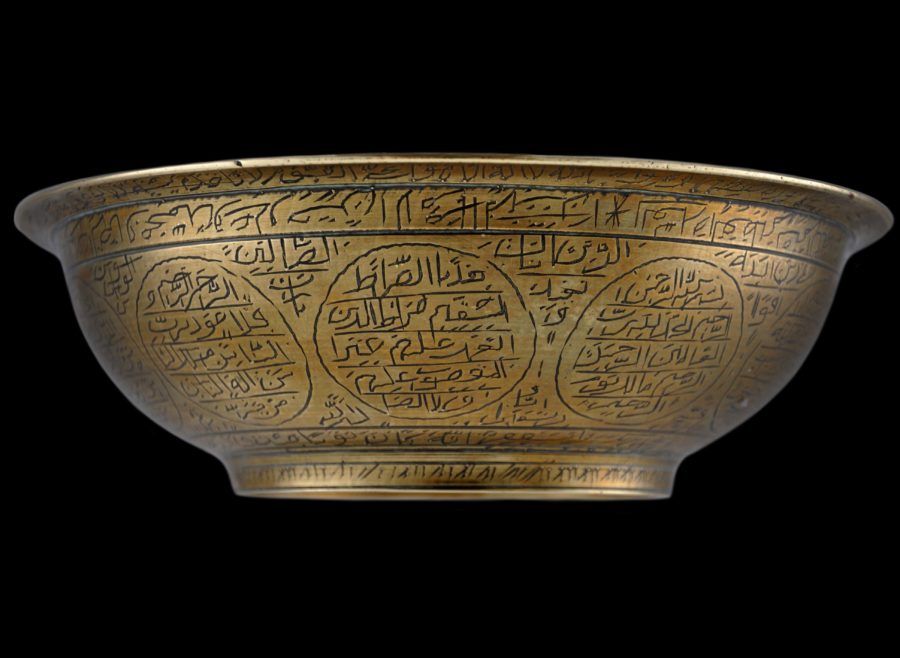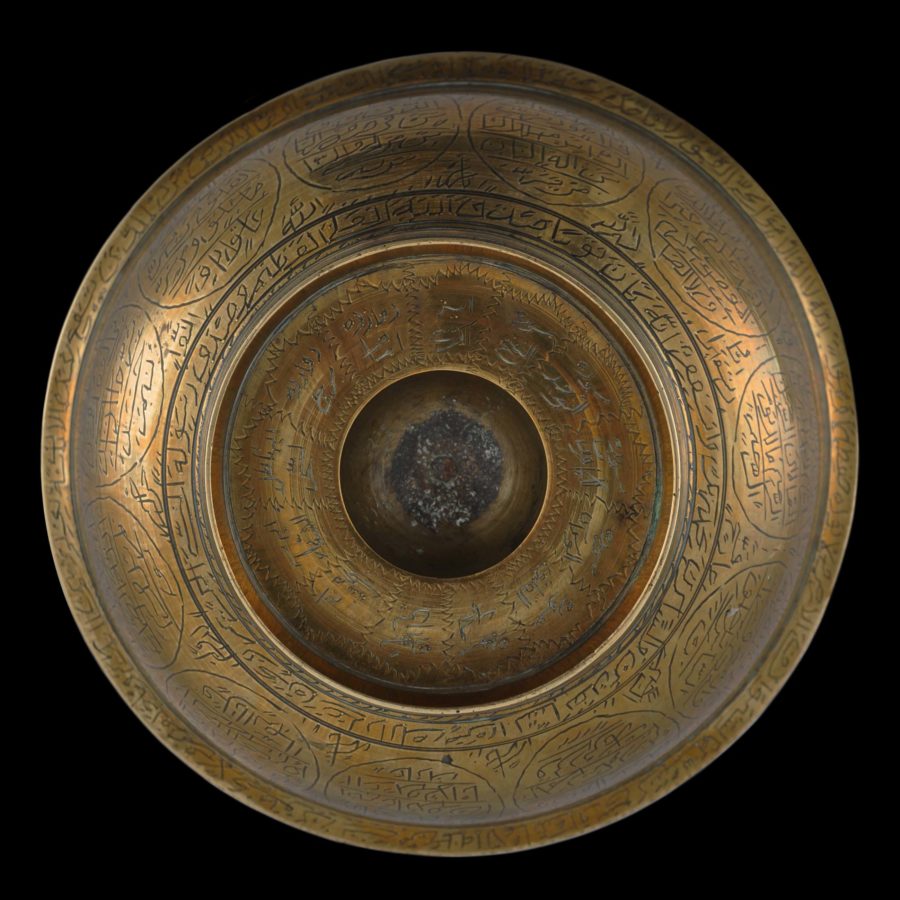This unusually large ‘magic’ or ‘medicine’ bowl dates to the nineteenth century. It is of brass and is unusual in that it features a smaller bowl attached to a dome in its centre. The smaller bowl is attached so that it can swivel around.
Of engraved brass, it has a steep, hemi-spherical central boss. It has an engraved, everted rim, and a low ring foot.
The central boss is surrounded by engraved bands of script in Arabic. The interior sides are engraved with more script within roundels, and boteh-shaped cartouches. The exterior side is decorated with a series of fields of more script.
The rim is flat and engraved with a single line of script that runs right round the bowl. The inscription begins with:
بِسْمِ ٱللَّٰهِ ٱلرَّحْمَٰنِ ٱلرَّحِيمِ
or ‘bism ellah el rahman el raheem’, which translates as ‘In the name of God the Most Gracious, the Most Merciful’.
The inscription then proceeds with first 11 verses of the Surat Yassin (or Surah Ya-sin) and (somewhat oddly) breaks into these verses to include three words from verse 12. The Surat Yassin is the 36th Surat of the Koran, and is seen as many as the ‘heart’ of the Koran.
Magic bowls did not offer continuous talismanic protection but were used only when needed. Liquid would be placed in the bowl and the Koranic verses and magical diagrams would imbue the liquid with curative and protective properties. Water might be left in the bowl overnight to absorb as much curative ‘power’ as possible and the afflicted person would then drink the liquid in the hope of relief.
The bowl here is in excellent condition and clear age. It is the largest example of one of these that we have had.
References
Seif El Rashidi, Yasmine El Dorghamy & Mamdouh Sakr, pers, comms., London & Cairo.
Maddison, F. & E. Savage-Smith, The Nasser D. Khalili Collection of Islamic Art: Science, Tools & Magic, Part One: Body and Spirit, Mapping the Universe, The Nour Foundation, 1997.
Savage-Smith, E., ‘Islamic magical texts vs. magical artefacts’, in Societas Magica Newsletter, Fall 2003.


